Capture the Color of Autumn in Camera!! Autumn comes up with a huge opportunity for those who love the color of nature. Because during autumn you see nature changing itself rapidly. You can find a touch of natural color everywhere.
Most famous photographers consider this season as the best time for shooting photos. Because the days are shorter in autumn. The scenery of beautiful landscapes changes quickly.
I am going to share some pro tips to make your autumn photography stunning. However, if you need to improve image quality, you can contact Clipping World.
Nevertheless, nature might be ever ready for photography, do you have the capacity to shoot iconic photos of autumn? Let’s start with some professional tips for capturing the color of autumn in the best possible way.
Best Autumn Photography Tips
01. Location Research | Autumn Photography Tips
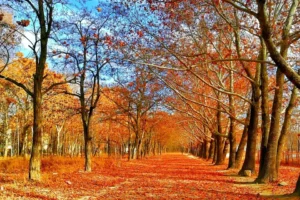
You might think that the fall is a season when everything seems picturesque. You might get tempted after noticing the fallen leaves outside your home. However, you should not go and click photos in a random place. Not every good-looking place is good for shooting photos.
You have to spend more time researching the location. Make a list of probable locations. Select the best place you think you can go to. Consider places that are nearby. Otherwise, it becomes difficult to move. As a result, you might end up being tired and the photos will not be up to the mark.
However, you may find a place where everything is okay, but the background has something unwanted. In that case, I would suggest you go to that place. Because you can take background removal services to remove that unwanted object.
02. Get Closer to the Seasonal Wildlife

Animals remain busy during the whole season of autumn. Because they prepare themselves for the upcoming winter. To shoot autumn photos means shooting the wildlife of autumn.
Well, it’s not wildlife photography. However, you should learn about the habits of wild animals. Find out at what time they come out and stay active in their regular activities. Get closer but not too close. Take photos from far away. But make sure they are well visible.
No matter how much we love wildlife, sometimes we get afraid of this as well. If you are shooting with your family, you can make pictures that will look as if you are in the wild. Having fun with wild animals. This is possible with image manipulation services.
03. Stag Silhouettes | Capture the Color of Autumn in Camera

Fall sees probably the best exhibition – the groove. Stags lock horns in fierce fights as they seek females in the September to November rearing season.
Shoot from a good way – all the more so for well-being as to abstain from frightening the deer away – as the animals are siphoned brimming with testosterone and assaults on people are not incomprehensible. A long zooming focal point combined with a wide opening helps separate deer from their experience.
Another great shot is to shoot into the light on an early, cloudy morning, uncovering for the more brilliant sky so the deer itself is in outline.
04. Portraits of Autumn | Autumn Photography Tips

For a pre-winter representation, you can’t beat a model all around wrapped against the components encompassed by chestnut-hued leaves. With a low sun in the sky, you’ll have the option to get a sufficiently bright shot. You can do it without the requirement for glimmer or reflectors up until late morning or early evening.
By just confronting your models into the sun. To make your autumn photos look extraordinary there is a photo retouching service. Just with a touch of Photoshop, you can take your photos to a different level.
Tossing or kicking leaves out of sight includes a feeling of fun and development to the shot. It likewise gives individuals something to do, maintaining a strategic distance from an unnatural posture. Set Aperture Priority mode on your camera and utilize a genuinely shallow gap – around f/4.
To guarantee the model’s facial highlights are in sharp concentration however to give a layered impact. So, leaves in the forefront and foundation become continuously out of core interest.
05. The Landscape
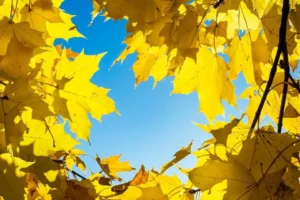
The brilliant hour – straightforwardly after dawn or not long before nightfall – is a most loved time for picture takers as light is honored with a magnificently delicate, warm quality as it’s separated by particles in the air. The drawback is that you need to get up at the beginning of the day to capitalize on it.
In any case, the extraordinary thing about fall time is that dawn gets later and later. Especially when the tickers return toward the finish of October, so hauling yourself up isn’t such an errand for what it’s worth in the late spring months. The sun stays lower in the sky for longer as well, which means the ‘hour’ endures somewhat more.
06. Morning Mist | Capture the Color of Autumn in Camera

In early harvest time, cold evenings are regularly trailed by warm days. This enormous variety in temperature gives the ideal conditions for making fog and haze. As night air cools, dampness in it consolidates and afterward shapes low-lying pockets of ground-embracing fog as the temperature rises.
Fog is at its general environmental around dawn – and before long starts to vanish and scatter. So, you’re lucky opening is restricted. You’ll be at a raised position; shooting into a valley, with trees. On the other hand, stronghold ruins jabbing out of the fog function admirably.
As shooting across low-lying fields, with foliage and far-off slopes getting through the mist. Fog frequently frames over enormous waterways. So, shooting over lakes is another acceptable choice. Increase the image quality by obtaining high-end image retouching services.
07. Reflection | Autumn Photography Tips
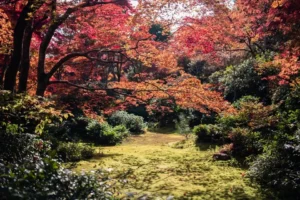
Take advantage of the bountiful shading in the scene by multiplying the rich pre-winter palette. You’ll require a high vantage highlight shoot down to a lake to reflect however much of the scene as could be expected.
As you’re shooting in a good way, a mid-run opening, around f/8, will give a lot of profundity of field. A long presentation will streamline any waves, so utilize an ND channel. Furthermore, putting your camera on a tripod will keep it completely still over a long introduction, and helps in calibrating your arrangement, as well.
Sometimes we need to remove reflections from our photos. In that case, you can have post-processing services of the Clipping World.
08. Color Up Close | Capture the Color of Autumn in Camera

As leaves fall, they turn lovely kaleidoscopic shades and uncover their fragile structure of veins, making them ideal for close-up photography.
For an overwhelming point of interest, a full-scale focal point is fit for anticipating a picture onto the sensor at real size, however, this will just extend a part of the leaf, so any focal point equipped for centering sensibly close up will do to photo a leaf completely – or gathering of leaves.
Shooting very close decreases the profundity of the field altogether and could drop out of core interest. A mid-run gap of f/8 to f/11 limits this. However, your focal point is probably going to be at its most keen as well, essential for bringing out detail.
If any kind of color needs a change, then go for a color correction service.
09. Still Life | Autumn Photography Tips
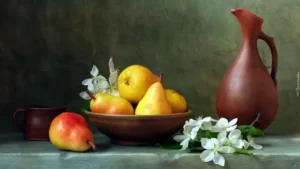
When the climate turns out to be unfortunate what about a harvest-time-themed still-life shoot? Set up a shoddy studio on your kitchen table. The best thing about still life is you’re totally in control. You can situate your subjects as you like and have all-out authority over lighting.
Set your camera on a tripod and utilize Live View. Along these lines, you can adjust your organization until it’s a slam against it.
A limited gap guarantees your entire scene is in the center or attempt a shallow profundity of the field with the goal that the primary subject of your scene is in the center; this is especially viable while shooting food.
10. Use Polarizing Filter
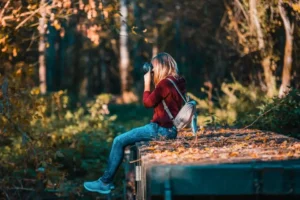
A polarizing channel is an unquestionable requirement that has a device for shooting fall hues. On the off chance that you recently imagined that polarizing channels are just useful for adding shading to the sky. You should invest some energy in seeing how polarizing channels really work.
When shooting dawns and particularly nightfall’s, one may believe that a polarizing channel would be futile to keep on a focal point. However, that is a long way from reality! Whenever utilized right, it can fundamentally chop down murkiness in the scene.
Most pictures that appeared in this article with far-off mountains in the scene (counting the two above) were shot with a polarizing channel appended to a focal point, which helped altogether decrease environmental dimness.
Conclusion | Capture the Color of Autumn in Camera
Many poets have lost their hearts to the beauty of autumn. They have written many poems on the same subject. John Keats wrote An Ode to Autumn. In that poem, he described the beauty of this season. So why don’t you do something great like this? Let’s start by capturing the color of autumn in the camera.

